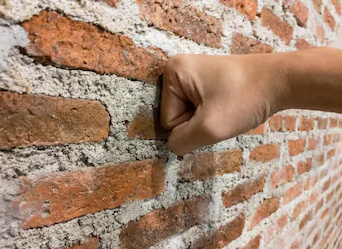Here is my “database” on IEMS and earbuds: RikudouGoku's Database - Google Sheets
I have also created a patreon for me to see how many people actually uses my database or/and reads my reviews. I be grateful if you would simply “subscribe” to me and even more so if you would donate to me. As I hate affiliate links and the likes, this was the best option for me to get some extra funding without getting any extra bias.
Terminology list
Aggressive : I mostly use this term to describe if the treble is “in your face” or not, meaning that it has a lot of treble quantity (not necessarily a sharp treble though). (similar to fatigue, but without the time factor that makes you tired after a while.)
Air : The sense of being exposed to real air and having an airy transducer/bud will make it easier to sound real. A sense of realism, and a very important factor to have if you are listening to live tracks. (having a lot of air can also help you perceive the soundstage as being bigger.)
Bloat /Bleed: I use both of these terms interchangeably but I mean the same thing, that the bass is either too loose or/and too slow so that it takes over more of the range than it should do (meaning that it “invades” the mids and also your perception of the treble). Having a lot of bass quantity is an easy way to get a bloated bass, but in some more rare case (positive for me) the transducer in question does not get bloated even with a ton of bass. That is a high-quality bass for me.
Bright : A brighter sound will have an overall sound that leans more toward treble than bass.
Coherency : Applies to hybrids where there are different driver types and each one has their own characteristics. Bad coherency would for example be if a transducer (DD = bass, BA = mid/treble) has a very slow bass speed while the treble is really fast, that would sound unnatural and you would be able to pick up on what driver is doing what frequencies. While good coherency is the opposite, where all drivers are “synced” as in that they have the same speed.
Details : Think of it as the resolution for video, you have 480p, 1080p and even 8k now. You can have stuff that sounds low detailed or low resolution (480p-) or highly detailed (1080p). It exposes more of the recording, like if you can hear the player turning the note pages.
Extension: How low/high a transducer can play, that is if it can reach 20hz or go up to 20khz. Different from the amount of rumble/air, since rumble/air is a quantitative factor and you can consider the extension to be the quality.
Fatigue : If a transducer is fatiguing, in most cases that means that it has a lot/too much treble quantity, so listening to it in a long session will make you tired. It doesn’t necessarily mean that it is sharp though (it can be). And fatigue can also be caused by a bloaty bass or if it simply has too much (quantity). If a transducer doesn’t have a lot of treble/bass quantity, then it most likely won’t be fatiguing but can be a boring experience since it won’t be energetic/exciting enough.
Imaging : How precise every instrument is placed in the sound. With good imaging it is easy to tell where everything is or if it is bad it can sound like a giant mess. Imaging is very important for gaming since that is the factor that lets you know where your enemies is by their footsteps.
(Here is a very quick and easy to understand explanation of soundstage/imaging: https://www.reddit.com/r/headphones/comments/ipfs5b/best_explanation_of_soundstage_vs_imaging/ )
Instrument-separation : How the distance between the instruments are placed. Bad = sounds like a mess/chaotic, good = the opposite, clean, can handle faster busy tracks.
Naturality : The combination of the 2 factors, being timbre and tonality. It is how natural/real a transducer sounds like on a track/genre. For example, you can have god-tier timbre but if the tonality is completely wrong for that specific track/genre, it doesn’t really matter since it won’t sound natural anyway.
Note-weight : I don’t think I have used the term “note weight” specifically that much, but that’s just the term used to specify thickness/thinness of the sound. Usually having a thinner sound will make it sound more “analytical” while a thicker would be more “musical”.
Shouty : Can’t relax while listening and female vocals particularly are very “nagging” like. Not pleasant.
Sharp : Worse than just a shouty sound and is painful, can sound like a gun shooting needles into your ears.
Sibilant : You DO NOT want me to use this term to describe the treble, this is the point where I simply can’t listen to it more than a few seconds before I almost throw them away. Extremely painful, or what I like to call “Death by treble”.
Soundstage : How “big” the sound is, if it sounds like it is room sized or a giant concert hall. Width = left/right and depth = forward/back are the dimensions that I use. Transducers are generally average in depth, but some have very deep soundstage and that is quite rare.
(Here is a very quick and easy to understand explanation of soundstage/imaging: https://www.reddit.com/r/headphones/comments/ipfs5b/best_explanation_of_soundstage_vs_imaging/ )
Speed : How fast or slow a bass is. There is the attack, which would be how fast you stretch out your arms when you punch and the decay that is how fast you pull back your punch. Having a fast bass is important (along with tightness) to keep the bass clean and not bloated and even more so if there is a lot of quantity.
Tame : The opposite of aggressive treble. It can sound very relaxing but risks being boring.
Texture : You can visualize bass texture like the pictures below.
Bad texture = stopping your punch once you hit the target.
Good texture = punching “through” the target.
Even if the bass quantity (punching strength) is the same, it will feel (hurt) more if you have more texture.
Tight : Used for describing how “tight” the bass punch is. Where you can visualize a tight bass as precise hits:

And the opposite, a loose bass would be something like this:
Where you can see a lot of shockwaves, that would be percieved as bloat in sound.
Timbre : Timbre is how close/natural the sound of your gear sounds like in comparison to the real instruments. If it sounds very similar to the real thing then it has good timbre, if it sounds unnatural/different then it has bad timbre.
Tonality : How thick/thin, bright, warm or dark a sound is. “Good” tonality is depended on the track/genre that is being used, for example on a Hip-hop track it is better if it is a warmer and thicker sound rather than bright and thin. While that same transducer that is warm/thick that will suit Hip-hop well might be bad for an acoustic track that is better with a brighter/thinner sound.
Transducer: A collective term for iems/earbuds/headphones/speakers.
Warm : A warmer sound will have an overall sound that leans more toward bass than treble.
2020 Gear of the year
RikudouGoku's Database (IEMs/Earbuds/Headphones Ranking list) - #388 by Rikudou_Goku
Cable measurements/ranking description
RikudouGoku's Database (IEMs/Earbuds/Headphones Ranking list) - #945 by Rikudou_Goku
2021-07-25: PEQ with spotify/youtube/etc on Android
2021-08-06: YINCROW X6 TRUE UPGRADE!!!
2021-09-18: Starter Pack Recommendation
2021-10-16: Preference target guide
2021-12-02: LZ A7 Mod (KZ DQ6 upgrade)
2021-12-18: Sony MDR-EX1000 cheaper alternative
2021-12-24: 2021 Gear of the year
2023-06-28: Source impedance effect on transducer frequency response









